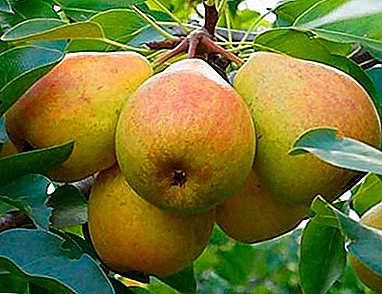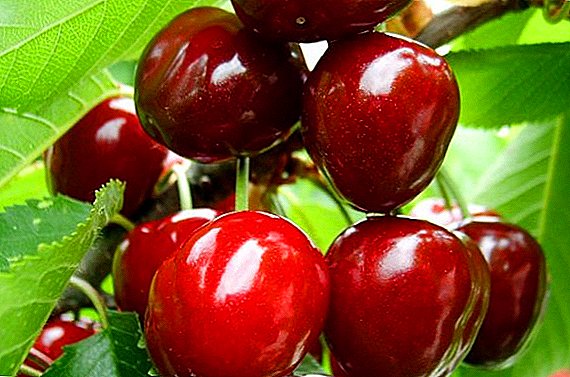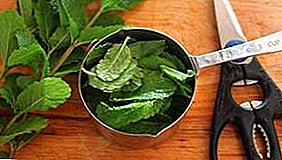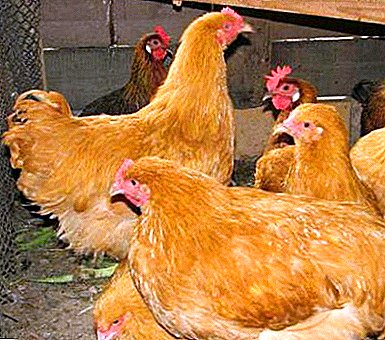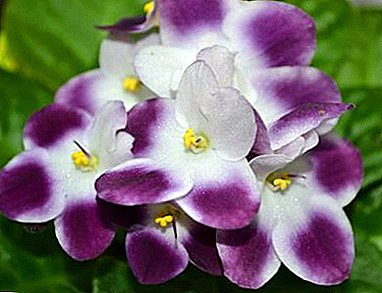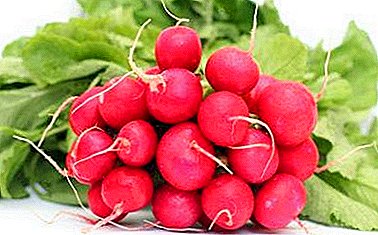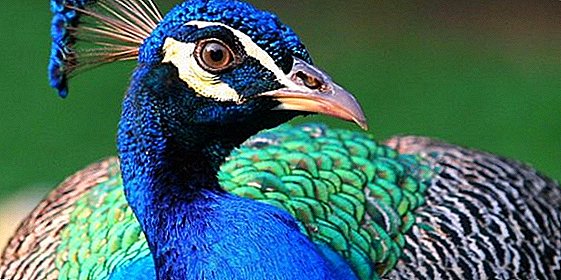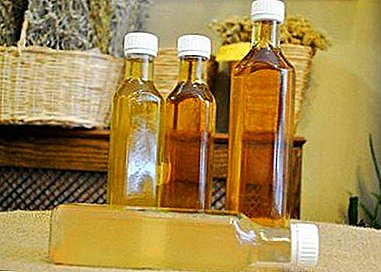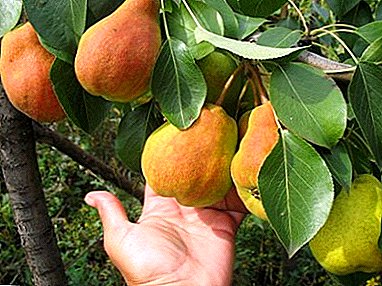
Among the wide variety of fruit crops grown in Russia, pear is rightly popular with gardeners. She is loved for the unique aroma and exquisite taste of fruits, remarkable both in fresh and processed form.
And it is also in demand because it grows equally well in different natural zones. Of particular interest to many experts are pear varieties, well accustomed to Siberia.
This region is difficult to produce fresh vitamin products, which are always lacking. Therefore, "Kupava" is acquired primarily for its healthy properties and excellent taste.
What kind is it?
Pear "Kupava" belongs to the category of varieties intended for efficient cultivation in Siberia and Trans-Urals.
 Such a "geographical" affiliation imposes special requirements on any plant in terms of survival and the ability to give a significant yield of fruit production in difficult climatic conditions.
Such a "geographical" affiliation imposes special requirements on any plant in terms of survival and the ability to give a significant yield of fruit production in difficult climatic conditions.
These requirements are fully consistent with the considered variety, which is early autumn and self-fertile variety.
The term of full ripening of its fruits comes by mid-September. This is very important for the life of the variety, considering that to the east of the Ural Mountains at this time serious frosts begin in many places already.
Early ripening "Kupava" allows you to collect the maximum possible yield without loss due to cold weather.
Self-fertility this pear, given the geography of its distribution, is also of great importance. This feature of fertilization, when pollination occurs due to its own pollen, allows the plant not to depend on the vagaries of the Siberian weather.
When cold weather and heavy rains suddenly come during the flowering period, when a gusty wind and the absence of bees and other pollinating insects interfere with normal pollination, self-fertility “pulls” the entire crop.
Of course, the self-production of Kupava has a negative side. With this principle of pollination, if it is constant, the viability and fecundity of the tree may decrease. But this problem can be stopped by planting trees of other varieties that will play the role of additional pollinators next to this pear.
Autumn pear varieties also include: Larinskaya, Svarog, Perun, Samara Beauty and Fairy Tale.
Breeding history and breeding region
 Sort "Kupava" was launched in 1971 at the M. Lisavenko Research Institute of Horticulture (Barnaul).
Sort "Kupava" was launched in 1971 at the M. Lisavenko Research Institute of Horticulture (Barnaul).
Culture was the result of crossing varieties "Theme"and"Favorite Clapp".
The selection was carried out by a group of scientists: I. Puchkin (head), M. Borisenko, E. Karataeva, I. Kalinina. Like many of his grades, Puchkin, a great connoisseur and lover of Slavic mythology, gave a novelty Old Russian name of a beautiful water flower.
All work was aimed at creating a culture that would compare favorably with the traditional "Lukashovka" in Siberia - pear species bred by the well-known breeder A. Lukashov under local conditions and differing good endurancebut not the best taste.
In the finished form "Kupava" acquired excellent taste, good keeping quality, rather large fruits.
The varieties can also boast of great taste: Krasulia, Lada, Decakrinka, Dessert Rossoshanskaya and Ilyinka.
Although Kupava was bred in the early 1970s, many more years passed until in 2000 it was not included in the State Register and zoned by West Siberian region.
Pear "Kupava": description of the variety and photos
Pear "Kupava" has the following features of the structure:
- Tree. Differs in average (in rare cases - slightly above average) growth.
- Crown, branches. It has a predominantly rounded shape. The crown is often quite thick.
- Shoots. Mostly upright, relatively thin, yellowish brown in color. Fruit formations are presented mainly in the form of simple and complex annuli - 3-5 cm centimeter branches ending in flowering or apical sprigs.
 Leaves. Very often, together with numerous branches form a strongly thickened tree crown.
Leaves. Very often, together with numerous branches form a strongly thickened tree crown.They are distinguished by the round shape of the plate of medium size.
Usually smooth, dark green leaves are kept on the branches with rather long, thin petioles.
- Fruit. The dimension of pears is medium (sometimes it is lower or higher than average). One fruit weighs on average from 85 to 100 g (in particularly favorable conditions, pears can gain weight up to 150 g).
For the most part, the fruits are distinctly hilly, somewhat oblique, which does not add to their visual attractiveness. At the summit of the fruit there is a sharp runaway. The fruit is soft to the touch, with a characteristic luster and seemingly oily skin.
The main color of pear "Kupava" is a golden yellow color. Very often a third of its total area is covered with a red blush. On the surface of the fetus there are only a few subcutaneous small spots of green color.
Asymmetrical pear kept on a long, obliquely set stem. The saturation of the juice of dense white flesh is average. Inside the pulp, in the seed chambers of the closed type, there are rounded seeds of brown color.
For more information about the variety and see the pears "Kupava" on the photo below:



Specifications
Fully fruiting pear variety "Kupava" starts from 4-5 years old. A feature of the variety is its regular fruiting, and "Kupava", as a rule, gives every year a fairly even harvest. True, they can hardly be called abundant - rather average.
Rogneda, Yakovlevskaya, Chizhovskaya, Nika and Feeriya also belong to the high-yielding varieties.
Such a pretty moderate yield often due to a relatively small number of fruits. The fact is that the volumes of annual fees are strongly influenced by, among other things, one characteristic specific feature of the variety "Kupava".
 According to numerous observations of breeders and gardeners, the abundance of pears on some branches is almost always accompanied by their almost complete absence on other branches.
According to numerous observations of breeders and gardeners, the abundance of pears on some branches is almost always accompanied by their almost complete absence on other branches.
At the same time, the fruits themselves not always large (as a rule, this is observed in particularly unfavorable weather conditions for years).
Nevertheless, many gardeners willingly grow this variety, based not only on its relatively modest yield, but on the taste of the Kupava fruit.
And they have excellent sweet and sour taste, their the flesh is abundant in refreshing juice. Such fruits are equally good when consumed fresh and in the preparation of various compotes, jams and other desserts.
Variety pear "Kupava": a description of the chemical composition
| Composition | amount |
|---|---|
| Sahara | 11,5% |
| Titrated acids | 0,33% |
| Vitamin C | 11.0 mg / 100 g |
| Tannins | 104 mg / 100 g |
For "Kupava" are also characteristic good product quality. So, ripening by mid-September, its fruits can be stored in excellent condition without a refrigerator for 2 weeks, and being placed in a refrigerator for up to 1.5-2 months.
At the same time, despite its “Siberian character”, this variety loses somewhat in its winter hardiness with the traditional Siberian “Lukashovka”. Gardeners should be aware that hard frost for a tree is a serious risk. But not very strong cold "Kupava" endures satisfactorily.
Planting and care
 Planting is done either spring or autumn. The perfect spot for this can be a plot in the garden, which it is well illuminated by the sun, contains loamy soils and where ground water does not come close to the surface of the earth.
Planting is done either spring or autumn. The perfect spot for this can be a plot in the garden, which it is well illuminated by the sun, contains loamy soils and where ground water does not come close to the surface of the earth.
For a seedling equip pit the depth of which should reach 1 m, and the diameter - 70-75 cm. In the dug hole pre-poured 10 liters of water with 2 glasses of fluffy lime diluted in it.
The pit before planting should stand for a week and a half. When planting, the roots should be covered with earth dug from this pit and mixed with 2 buckets of vegetable humus, 2 buckets of ordinary sand and a glass of superphosphate.
After installing the seedling in the hole, its roots are covered with a mixture of soil and fertilizer. Pristvolny circle gently seal and Pour 2-3 buckets of water. Watering place follows Be sure to promulgate - sprinkle with a layer of dry humus.
Standard care for pear trees includes their regular watering, fertilizing the soil and feeding, carrying out protective measures against pests, pruning.
Based on the climatic features of the landing area, the tree is warmed for winter (This is especially true for plants at a young age).
Since crown formation traditionally proceeds naturally, this variety during life does not need large-scale pruning. But the initial impetus to give this process is still worth it.
Therefore, at the age of one year, sapling at a height of 50-60 cm from the surface of the earth cutThat will help in the future to develop the top of the tree.
Diseases and pests
 Pear varieties "Kupava" has almost 100% immunity to fungal diseases.
Pear varieties "Kupava" has almost 100% immunity to fungal diseases.
The real threat to the crop and potential crop is another attack - pear moth (Carpocapsa pyrivora).
Outwardly very reminiscent of the apple moth, this insect attacks exclusively pears. Butterfly moths lay their eggs on the skin of fruits (up to 50-70 eggs from each butterfly) in the first half of June.
After 6-10 days after that, the formed caterpillars of an off-white color burrow into the flesh of the pear and penetrate up to the seed chambers. There they eat their main "dish" - pear seeds.
After a month of constant feeding on the insides of the pear, the adult caterpillars emerge from the fruit and, going down, hide in the ground. In the soil, the caterpillars make cocoons, in which they later winter. In the spring, the new life cycle of this pest begins with the departure of new butterflies from the cocoons.
Most often, the fruits damaged by these insects dry out and then fall off. To avoid this, the moth must be fought.
The most effective are agrotechnical methods: destruction of the remains of the infected plants, propashka row-spacings, soil chemical processing in the field of a trunk. Loosening the soil is best done in spring and summer, when pupal formation occurs.
 Another way is wood treatment with insecticides. To maximize the effect of this method, trees should spray benzophosphate before the start of the laying of eggs by butterflies (approximately 35-40 days after the end of the flowering period of the tree).
Another way is wood treatment with insecticides. To maximize the effect of this method, trees should spray benzophosphate before the start of the laying of eggs by butterflies (approximately 35-40 days after the end of the flowering period of the tree).
In this case, the laying of eggs gets on the fruit treated with toxic chemicals, and the pest dies.
Such varieties of pears are resistant to certain types of diseases: Pamyat Zhegalov, Tonkovetka, Yanvarskaya, Gera and Cathedral.
Pear "Kupava" - an excellent pear plant with excellent tasty fruits. But in order to enjoy them, you will have to work hard.


 Leaves. Very often, together with numerous branches form a strongly thickened tree crown.
Leaves. Very often, together with numerous branches form a strongly thickened tree crown.